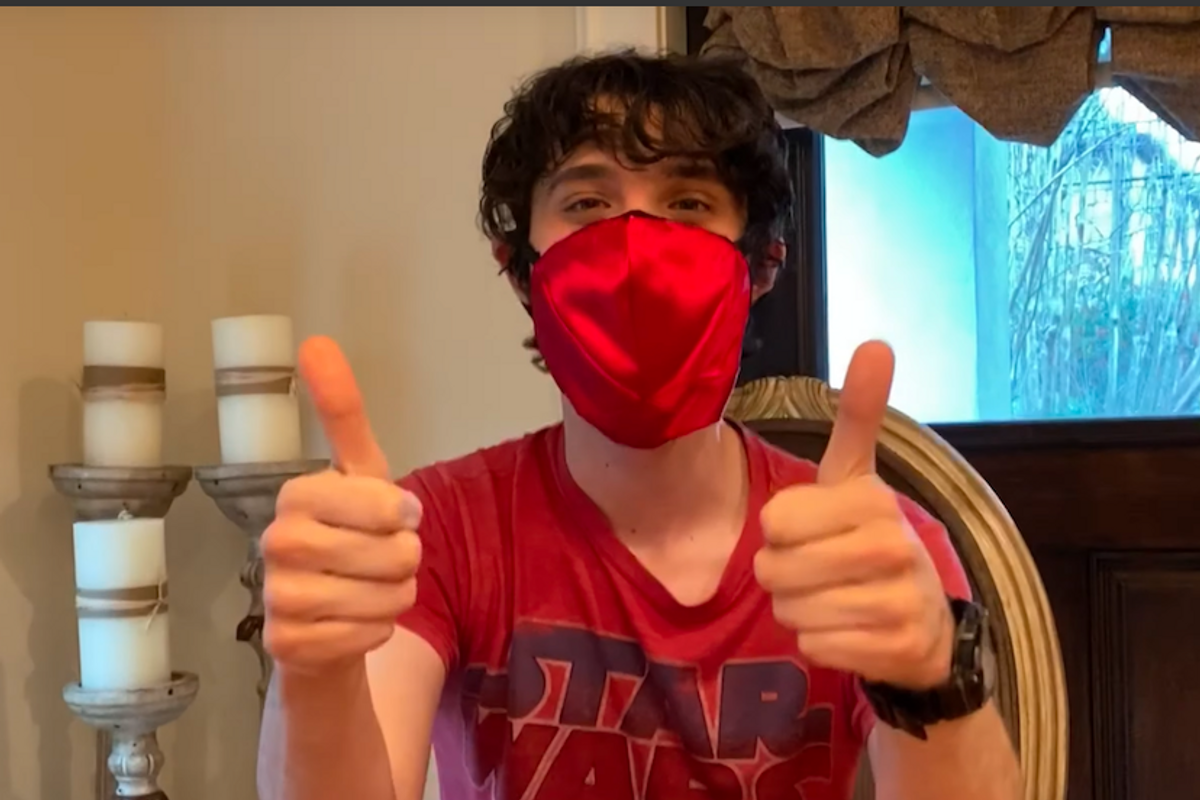Jewish family converts hundreds of yarmulkes into face masks for the homeless

People experiencing homelessness are among the most vulnerable during the COVID-19 pandemic. Surviving often depends on being in densely populated areas where they can panhandle or use public facilities such as restrooms. These days, people aren't out in public and many businesses with restrooms are closed.
Shelters have become breeding grounds for the virus so many unhoused people have been avoiding them to prevent themselves from getting sick.
The unhoused population also disproportionately suffers from lung disease, heart disease, hypertension, and cancer. These are all risk factors for experiencing the deadly symptoms of COVID-19.
Matthew and Jeremy Jason of Houston, Texas found an ingenious way to help the unhoused stay safe during the crisis. They are collecting yarmulkes, or kippahs as they're known in Hebrew, and turning them into face masks and giving them to people experiencing homelessness.
They call their campaign "Kippahs to the Rescue."
The idea came to Matthew during a religious observance.
Kippahs to the Rescue - Jeremywww.youtube.com
"We were sitting down for Shabbat, thinking about COVID-19, and thought this would be a great way to help out," Matthew told the JHV. "We knew there was a mask shortage, so we started our own production, tried making a couple, and then really launched into it."
The Jason family had a large collection of yarmulkes they had received over the years. They are commonly handed out at Jewish events such as weddings and Bar Mitzvahs. The family then asked members of their congregation, Congregation Brith Shalom, to chip in and donate theirs as well.
A drive-thru collection box was set up at the temple for congregants to drop off their extra yarmulkes.
"I guess you can say we've stockpiled kippahs over the years," said Matthew, 15, said. "We thought it would be a great time to be really productive with all of these. It's been a real family effort."
To convert the yarmulkes into face masks, the family first started sewing elastic bands on the sides. But they switched to using clips because it's faster and the masks are just as strong. It takes about five minutes to make each mask.
"In less than a week we were able to collect enough of them to make 160 face masks," said Matthew. "My parents, brothers and I worked very hard to sew elastic bands on them, and they were ready to be delivered by Friday."

Matthew and Jeremy had already been part of an organization that helps the local homeless population, Food Not Bombs, so it was easy for them to get the face masks to the people who need them.
According to its website, "Food Not Bombs is an all-volunteer movement that recovers food that would otherwise be discarded, and shares free vegan and vegetarian meals with the hungry in over 1,000 cities in 65 countries in protest to war, poverty, and destruction of the environment."
The Jason family has collected nearly 700 yarmulkes and turned over 300 into face masks.
Everyone has a special skill, talent, or, in the Jason family's case, collection, they can use to help the most vulnerable during the pandemic. The Jason family is a great example of people using their creativity and connections to find a unique way to help.
- Queens Hospital UK doctor advises on potential lifesaving ... ›
- 17-year-old builds a website to closely track the Coronavirus ... ›
- A trauma psychologist weighs in on the risks of 'motivational ... ›





 CEO Rob Dance holds up a whipe board with his culture philosophy.
CEO Rob Dance holds up a whipe board with his culture philosophy.  A heart shaped neon sign in the dark
Photo by
A heart shaped neon sign in the dark
Photo by